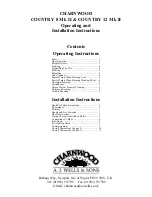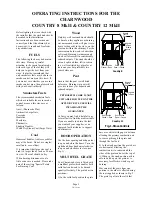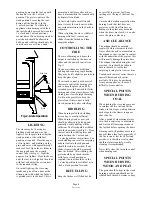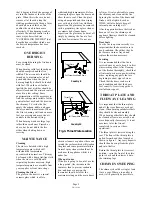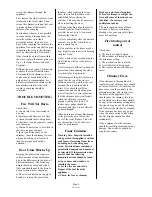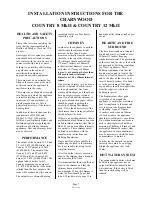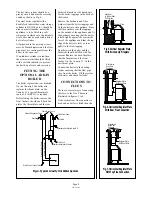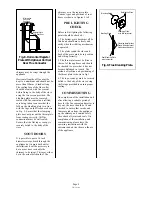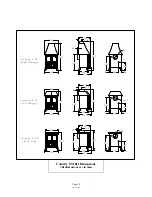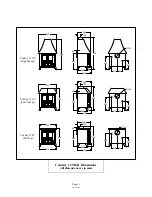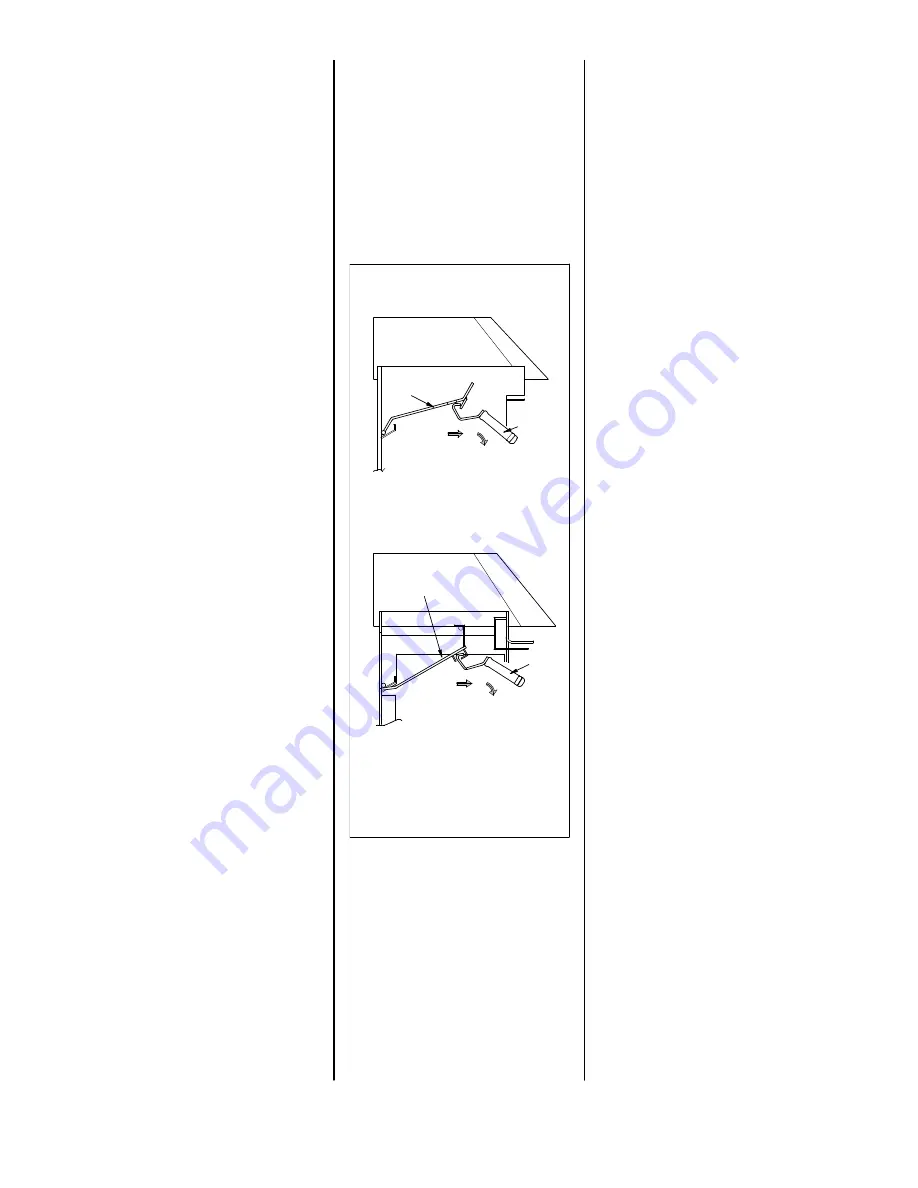
that it begins to block the passage of
air into the firebox at the side of the
grate. When this is the case do not
remove all of the ash using the
riddling mechanism but keep a layer
about half an inch thick as this
enables the wood to burn more
effectively. When burning wood or
peat use the airwash control in the
same way as described (see
"CONTROLLING THE FIRE" )but
keep the door airslides closed once
the desired temperature has been
reached.
OVERNIGHT
BURNING
For overnight burning the fire doors
must be closed.
When burning solid fuel the ashpan
should be emptied and the fire
riddled. The air controls should be
turned up to maximum for a brief
period and then when the fire is
burning brightly it should be loaded
with fuel. When the new fuel has
ignited, the door airslides should be
almost closed and the airwash control
moved to a low setting. Some
experimentation will be necessary to
find the settings most suitable for the
particular fuel used and the draw on
the chimney. To revive the fire,
empty the ashpan, riddle, and open
the air controls to maximum. When
the fire is burning well load on more
fuel as necessary and move the air
controls to the desired setting.
When burning wood use large logs
rather than small ones. Proceed as
above, but do not riddle the fire
either when shutting down or
reviving.
MAINTENANCE
Cleaning
The stove is finished with a high
temperature paint which will
withstand the temperatures
encountered in normal use. This may
be cleaned with a damp lint-free cloth
when the stove is cold. Should
re-painting become necessary, high
temperature paints are available from
your supplier or from stove shops.
Cleaning the Glass
The glass in the doors is a special
ceramic glass which is able to
withstand high temperatures. Before
cleaning the glass open the doors and
allow them to cool. Clean the glass
using a damp cloth and then wiping
over with a dry cloth. Any stubborn
deposits on the glass may be removed
with a proprietary stove glass cleaner
or ceramic hob cleaner. Some
deposits on the glass may be burnt off
simply by running the fire at a fast
rate for a few minutes. Do not use
abrasive cleaners or pads as these can
scratch the surface which will weaken
the glass and cause premature failure.
Aerosol spray cleaners should not be
used near the appliance whilst it is
under fire.
When not in use
If the fire is going to be out of use for
a long period, (for instance in the
summer,) then to prevent condensa-
tion, and hence corrosion, the
thermostat should be left at the
maximum setting and the main doors
left ajar. It is also advisable to sweep
the chimney and clean out the fire.
Spraying the inside of the doors and
firebox with a light oil, such as
WD40, will also help to keep all
internal parts working well.
After long periods where the fire has
been out of use, the chimney and
appliance flueways should be cleaned
before lighting.
Door Seals
For the fire to operate correctly it is
important that the door seals are in
good condition. Check that they do
not become worn or frayed and
replace them when necessary.
Servicing
It is recommended that the fire is
serviced once a year to keep it in first
class working order. After cleaning
out the firebox thoroughly, check that
all internal parts are in good working
order, replacing any parts that are
beginning to show signs of wear.
Check that the doors seals are in
good condition and that the doors
seal correctly. A servicing guide is
available on request.
THROAT PLATE AND
FLUEWAY CLEANING
It is important that the throat plate
and all the stove flueways are kept
clean. When burning smokeless fuels
they should be cleaned monthly.
When burning other fuels they should
be cleaned at least once a week, and
more frequently if necessary. It is not
necessary to let the fire out
completely to carry out these
operations.
The throat plate is lowered using the
tool. The front of the throat plate is
pulled forward and then lowered as
shown in figure 3. Any sooty deposits
should then be swept from the plate
and into the fire.
Return the throat plate to its correct
position - raise the front of the plate,
push it back and then lower it onto
the retaining lugs.
CHIMNEY SWEEPING
The chimney should be swept at least
twice a year. Where a top outlet is
used it will generally be possible to
Tool
Pull Forward and Swing Down
Tool
Throat Plate
Throat Plate
Pull Forward and Swing Down
Country 8
Country 12
Fig. 3. Throat Plate Location
Page 5
TW16 3/99


